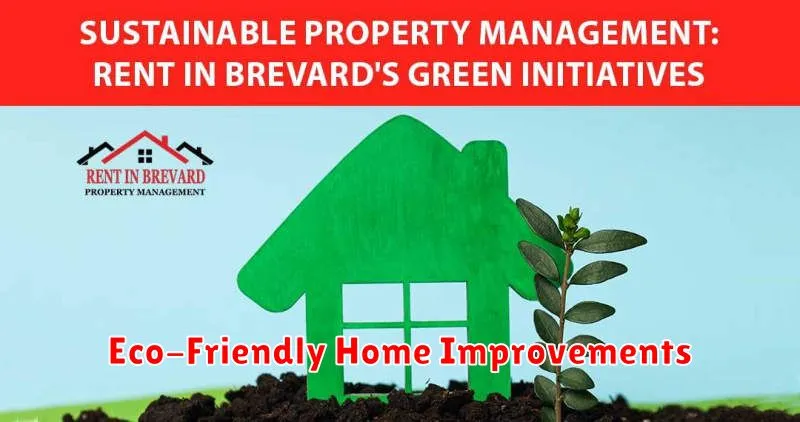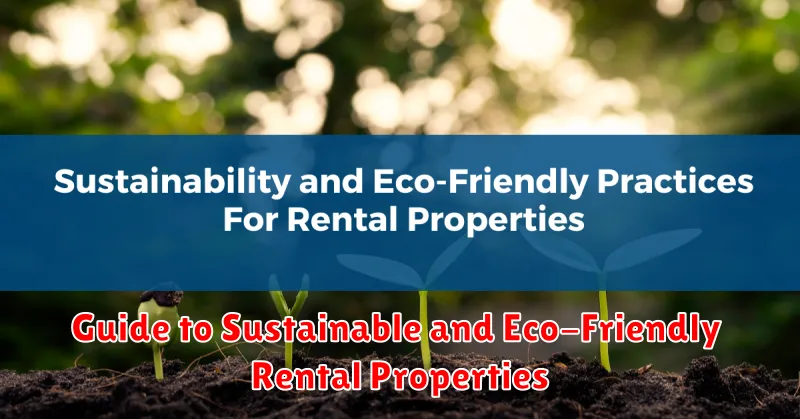Are you a landlord seeking to minimize your environmental impact and attract environmentally conscious tenants? This comprehensive guide explores the crucial aspects of creating and managing sustainable and eco-friendly rental properties. Learn how to implement green initiatives that not only benefit the planet but also enhance property value, reduce operating costs, and appeal to a growing market of renters prioritizing sustainability. From energy-efficient upgrades to water conservation strategies and waste management solutions, this guide provides practical advice and actionable steps for transforming your rental property into a model of eco-conscious living.
Discover how incorporating sustainable practices can be a win-win for both landlords and tenants. This guide delves into the key areas of green building, encompassing energy efficiency, water conservation, waste reduction, and the use of eco-friendly materials. Whether you are managing a single-family home or a large apartment complex, you will find valuable insights and practical tips to make your rental property more environmentally friendly, attracting responsible tenants and contributing to a healthier planet. Embrace sustainability and unlock the numerous benefits of eco-conscious property management.
Why Sustainability Matters in Rentals
Sustainability in rental properties offers a multitude of benefits for both tenants and landlords. For tenants, sustainable features translate to lower utility bills, healthier living environments, and a reduced carbon footprint. Lower energy consumption through efficient appliances and insulation directly impacts monthly costs, while improved air quality and natural light contribute to well-being.
From a landlord’s perspective, sustainable practices increase property value and attract environmentally conscious tenants. Reduced operating costs through efficient systems and waste management contribute to higher profitability. Furthermore, incorporating sustainable features demonstrates social responsibility and enhances a property’s marketability in an increasingly eco-conscious market.
Eco-Friendly Home Improvements

Implementing eco-friendly improvements in your rental property offers numerous benefits, including reduced utility costs, increased property value, and a healthier living environment for tenants. Focusing on energy efficiency and sustainable materials can make a significant difference.
Energy Efficiency
Upgrade appliances to Energy Star certified models. These appliances consume less energy, lowering electricity bills. Install low-flow faucets and showerheads to conserve water and reduce water heating costs. Improve insulation in walls and attics to minimize energy loss for heating and cooling.
Sustainable Materials
Consider using eco-friendly flooring options such as bamboo or reclaimed wood. When painting, opt for low-VOC paints to minimize harmful chemical emissions. For renovations, choose sustainably sourced materials like recycled countertops or responsibly harvested lumber.
Energy-Efficient Appliances and Lighting
Switching to energy-efficient appliances and lighting is a key step towards creating a sustainable rental property. These upgrades not only benefit the environment but also translate to lower utility bills for tenants, making your property more attractive.
Look for appliances with the Energy Star label. These appliances meet strict efficiency guidelines set by the U.S. Environmental Protection Agency. Consider offering incentives to tenants for using energy wisely.
LED lighting is another significant area for improvement. LED bulbs consume significantly less energy than traditional incandescent bulbs and also last much longer, reducing replacement costs.
Water Conservation Measures
Implementing water conservation measures is crucial for creating sustainable rental properties. These efforts not only reduce utility costs but also contribute to environmental responsibility.
Low-Flow Fixtures
Installing low-flow showerheads, faucets, and toilets significantly reduces water usage without compromising performance. These fixtures use less water per minute, resulting in substantial long-term savings.
Leak Detection and Repair
Regularly inspect plumbing for leaks and address them promptly. Even minor drips can waste a significant amount of water over time. Encourage tenants to report any leaks immediately.
Promoting Eco-Friendly Practices
Promoting eco-friendly practices within your rental properties benefits both the environment and your bottom line. Tenant education is key. Provide clear guidelines on recycling procedures, composting, and proper waste disposal.
Encourage energy conservation by suggesting the use of energy-efficient appliances and lighting. Consider installing low-flow showerheads and toilets to reduce water consumption. Regular maintenance also plays a crucial role. Promptly address leaks and ensure proper insulation to minimize energy waste.
Benefits for Owners and Tenants
Embracing sustainability in rental properties offers a multitude of advantages for both owners and tenants. Owners can benefit from reduced operating costs through lower energy and water bills. Improved property values and increased tenant attraction are also key advantages. Furthermore, sustainable practices demonstrate corporate social responsibility, enhancing reputation and attracting environmentally conscious investors.
Tenants residing in eco-friendly properties enjoy healthier living environments with improved indoor air quality and thermal comfort. Lower utility bills translate to cost savings, and a reduced carbon footprint aligns with personal values for many individuals. The enhanced comfort and well-being offered by sustainable features contribute to greater tenant satisfaction and retention.

